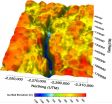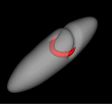(Press-News.org) A recent study completed at the University of Eastern Finland shows that dietary polyunsaturated fatty acids may reduce the risk of coronary heart disease. The sources of polyunsaturated fatty acids include fish, vegetable oils, and nuts. The findings were published in Arteriosclerosis, Thrombosis & Vascular Biology, an esteemed journal of the American Heart Association.
Recent studies have not found an association between the consumption of saturated fats and the risk of cardiovascular diseases. It seems that the mere reduction of saturated fats from the diet does not reduce the risk of cardiovascular diseases. In fact, what is added to the plate in place of saturated fat seems to be more important. Earlier research has found that the risk of cardiovascular diseases reduces when saturated fats are replaced with polyunsaturated fats. However, this has not been observed when replacing saturated fats with carbohydrates. For example, the new Nordic Nutrition Recommendations that were published in early 2014 now recommend that saturated fats should be replaced with polyunsaturated fats.
The dietary habits of 1,981 men aged between 42 and 60 were assessed at the baseline of the Kuopio Ischaemic Heart Disease Risk Factor Study (KIHD) at the University of Eastern Finland in 1984-1989. During a follow-up of 21.4 years, 565 men were diagnosed with a coronary heart disease. Out of these, 183 were cardiac events resulting in the death of the patient.
The study used computational replacement models to study how the replacement of fatty acids with other types of fatty acids or carbohydrates affects the risk of coronary heart disease. These models showed that the consumption of polyunsaturated fatty acids was especially linked to reduced risk of dying of heart disease, no matter whether they replaced saturated fats, trans fats, or carbohydrates in the diet. However, replacing saturated fats with carbohydrates did not affect the risk of heart disease. Furthermore, the quality of carbohydrates, measured by the glycemic index, was irrelevant in these replacement models. A surprising observation was that the consumption of monounsaturated fatty acids was linked to a higher risk.
Similar links as those of cardiovascular disease mortality were observed also when studying the relationship of different fatty acids with carotid atherosclerosis.
The study gives new insight into how different fatty acids affect the risk of coronary heart disease, as the amount of saturated fat in the diets of the participants in the present study, i.e. men living in eastern Finland, was higher than in most other study populations. Furthermore, only a few of the similar studies have taken the quality of carbohydrates into consideration. The present study shows, in line with earlier research, that the risk of cardiovascular diseases can be reduced by replacing saturated fats with polyunsaturated fats.
INFORMATION:
For further information, please contact:
Jyrki Virtanen, PhD, Adjunct Professor of Nutritional Epidemiology, University of Eastern Finland Institute of Public Health and Clinical Nutrition, tel. +358294454542, jyrki.virtanen@uef.fi
Dietary Fatty Acids and Risk of Coronary Heart Disease in Men: the Kuopio Ischaemic Heart Disease Risk Factor Study. Jyrki K. Virtanen, Jaakko Mursu, Tomi-Pekka Tuomainen, Sari Voutilainen. Arteriosclerosis, Thrombosis & Vascular Biology. Published online 25 September 2014.
Dietary polyunsaturated fatty acids linked to smaller risk of coronary heart disease
2014-09-30
ELSE PRESS RELEASES FROM THIS DATE:
On the trail of the truffle flavor
2014-09-30
This news release is available in German. FRANKFURT. Truffles, along with caviar, are among the most expensive foods in the world. Because they grow underground, people use trained dogs or pigs to find them. But the distinctive smell of truffles is not only of interest to gourmets. A group of German and French scientists under the direction of the Goethe University Frankfurt have discovered that the smell of white truffles is largely produced by soil bacteria which are trapped inside truffle fruiting bodies.
White truffles from the Piedmont region in Italy can reach ...
NASA ocean data shows 'climate dance' of plankton
2014-09-30
The greens and blues of the ocean color from NASA satellite data have provided new insights into how climate and ecosystem processes affect the growth cycles of phytoplankton—microscopic aquatic plants important for fish populations and Earth's carbon cycle.
At the bottom of the ocean's food chain, phytoplankton account for roughly half of the net photosynthesis on Earth. Their photosynthesis consumes carbon dioxide and plays a key role in transferring carbon from the atmosphere to the ocean. Unlike the plant ecosystems on land, the amount of phytoplankton in the ocean ...
NASA support key to glacier mapping efforts
2014-09-30
Thanks in part to support from NASA and the National Science Foundation, scientists have produced the first-ever detailed maps of bedrock beneath glaciers in Greenland and Antarctica. This new data will help researchers better project future changes to glaciers and ice sheets, and ultimately, sea level.
Researchers at the Center for Remote Sensing of Ice Sheets, or CReSIS, at the University of Kansas in Lawrence, Kansas, recently built detailed maps of the terrain beneath Greenland's Jakobshavn Glacier and Byrd Glacier in Antarctica. The results of this study were published ...
NASA-funded rocket has 6 minutes to study solar heating
2014-09-30
On Sept. 30, 2014, a sounding rocket will fly up into the sky – past Earth's atmosphere that obscures certain wavelengths of light from the sun -- for a 15-minute journey to study what heats up the sun's atmosphere. This is the fourth flight for the Very high Angular Resolution Ultraviolet Telescope, or VAULT, will launch from the White Sands Missile Range near Las Cruces, New Mexico.
The instrument, now called VAULT2.0, has been refurbished with new electronics and an imaging detector to capture images more frequently than before. While in space, VAULT2.0 will observe ...
Deceptive-looking vortex line in superfluid led to twice-mistaken identity
2014-09-30
So long, solitons: University of Chicago physicists have shown that a group of scientists were incorrect when they concluded that a mysterious effect found in superfluids indicated the presence of solitons—exotic, solitary waves. Instead, they explain, the result was due to more pedestrian, whirlpool-like structures in the fluid. They published their explanation in the Sept. 19 issue of Physical Review Letters.
The debate began in July 2013, when a group of scientists from the Massachusetts Institute of Technology published results in Nature showing a long-lived structure ...
New discovery approach accelerates identification of potential cancer treatments
2014-09-30
ANN ARBOR—Researchers at the University of Michigan have described a new approach to discovering potential cancer treatments that requires a fraction of the time needed for more traditional methods.
They used the platform to identify a novel antibody that is undergoing further investigation as a potential treatment for breast, ovarian and other cancers.
In research published online in the Proceedings of the National Academy of Sciences, researchers in the lab of Stephen Weiss at the U-M Life Sciences Institute detail an approach that replicates the native environment ...
Gene doubling shapes the world: Instant speciation, biodiversity, and the root of our existence
2014-09-30
What do seedless watermelon, salmon, and strawberries all have in common? Unlike most eukaryotic multicellular organisms that have two sets of chromosomes and are diploid, these organisms are all polyploid, meaning they have three or more sets of chromosomes—seedless watermelon and salmon have 3 and 4 sets of chromosomes, respectively, and strawberries have 10! While this might seem surprising, in fact most plant species are polyploid. Polyploidy, or genome doubling, was first discovered over a century ago, but only recently, with the development of molecular tools, has ...
Smithsonian scientists discover coral's best defender against an army of sea stars
2014-09-30
Coral reefs face a suite of perilous threats in today's ocean. From overfishing and pollution to coastal development and climate change, fragile coral ecosystems are disappearing at unprecedented rates around the world. Despite this trend, some species of corals surrounding the island of Moorea in French Polynesia have a natural protector in their tropical environment: coral guard-crabs. New research from the National Museum of Natural History's Smithsonian Marine Station scientist Seabird McKeon and the museum's predoctoral fellow Jenna Moore of the Florida Museum of Natural ...
Asthma symptoms kicking up? Check your exposure to air pollution
2014-09-30
ARLINGTON HEIGHTS, Ill. (September 30, 2014) – People who suffer from asthma may think there's not a lot they can do to control their asthma besides properly taking medications and avoiding allergic triggers.
According to a new article in the Annals of Allergy, Asthma and Immunology, the scientific publication of the American College of Allergy, Asthma and Immunology (ACAAI), asthma sufferers can learn lessons about managing their asthma by examining their lifestyle. The woman described in the Annals article improved her asthma once she and her doctor determined her ...
High-dose vitamin D for ICU patients who are vitamin D deficient does not improve outcomes
2014-09-30
Administration of high-dose vitamin D3 compared with placebo did not reduce hospital length of stay, intensive care unit (ICU) length of stay, hospital mortality, or the risk of death at 6 months among patients with vitamin D deficiency who were critically ill, according to a study published in JAMA. The study is being posted early online to coincide with its presentation at the European Society of Intensive Care Medicine annual congress.
A high prevalence of low vitamin D levels has been confirmed in patients who are critically ill. Many studies suggest that a low vitamin ...




